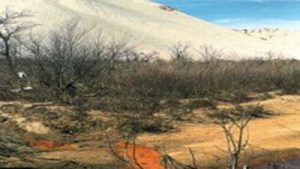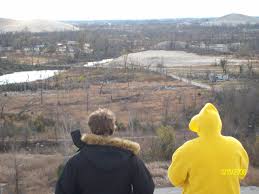
The Environmental Protection Agency indicated that construction at nearly 34 Superfund sites in the U.S. has been either reduced or suspended because of the COVID-19 pandemic. However, work has not been interrupted at Oklahoma’s largest superfund site at Tar Creek.
“EPA’s work continues at the Tar Creek Superfund site, including remediation at residential sites,” explained a spokeswoman with the EPA’s Region 6 headquarters in Dallas. “The current work includes excavation and disposal of chat into the on-site repository.”

Earlier, the EPA’s Administrator Andrew Wheeler said about 12% of all EPA sites with ongoing remedial actions had been affected by the spread of the coronavirus.
“EPA remains committed to protecting human health and the environment as we continue to adjust to the evolving COVID-19 pandemic,” said Wheeler. “This guidance will allow us to keep workers and the residents in these communities safe while also being able to respond to any emergency that may present an imminent danger to the public health or welfare.”
Regions have decided and may continue to decide to reduce or suspend response actions at particular sites.
The interim guidance focuses on decision making at emergency response and longer term cleanups sites where EPA is the lead agency or has direct oversight of, or responsibility for, the cleanup work. This includes, but is not limited to, Superfund cleanups, Resource Conservation and Recovery Act (RCRA) corrective actions, Toxic Substance and Control Act PCB cleanups, Oil Pollution Act spill responses, and Underground Storage Tank Program actions. In addition, EPA is sharing this guidance with states to take into consideration as they encounter similar issues at state-lead RCRA cleanup sites.
To address the current challenges posed by the COVID-19 situation, EPA is making decisions about continuing, reducing, or pausing on-site activities on a case-by-case basis consistent with the following priorities:
- Protecting the health and safety of the public, as well as maintaining the health and safety of EPA staff and cleanup partners, is the Agency’s highest priority. Integral to the protection of health and safety is the close coordination with federal, state, tribal, or local health authorities.
- Maintaining EPA’s ability to prevent and respond to environmental emergencies, is also a critical priority for the Agency.
This same approach will apply to EPA’s decision making related to requests from outside parties engaged in cleanup and response sites (e.g., states, tribes, local governments, other federal agencies, other parties, property owners, etc.) for extensions or delays in performance. These decisions will be made in accordance with any existing agreements or enforcement instruments.
In addition, it is recommended that Superfund site teams cancel or postpone in-person public meeting events, door-to-door visits, and other site-related face to face interactions to be consistent with current COVID-19 guidance from the CDC and other federal, state, tribal and local officials. We fully encourage EPA staff to keep in contact with affected communities using virtual and other communication tools such as on-line meetings, webinars, conference calls, and call-in numbers, as well as fact sheets, postcards, phone, and social media.
Source: EPA



